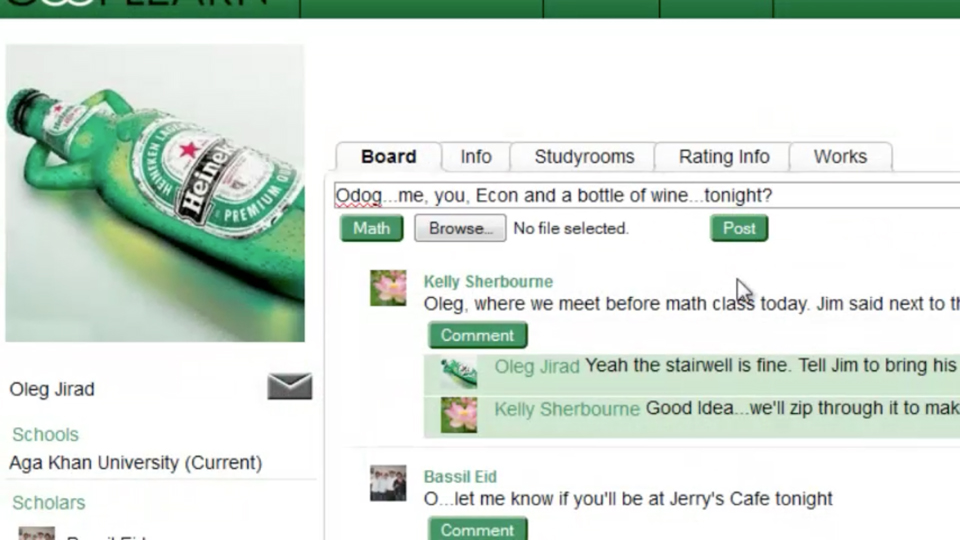What if there was a place where students could find and share relevant course content like notes and past assignments and exams? Imagine not having to raid the library for past exams or having to send the dreaded “Can I please have your notes?” mass email.
UTM students Bassil Eid and Robin Defaye are the creators of Cooplearn, a website launched to a select handful of students over the past few weeks. I had the chance to speak with Eid about the reasons for the website’s creation, its future direction, and the reviews Cooplearn has been getting from users.
Eid and Defaye came up with the idea for Cooplearn when they realized how dependent they were on their friends for completing assignments and studying. “We also performed much better when we communicated with our friends and classmates about studying for exams and completing assignments,” says Eid. “We learned that going through a tough experience with others who are in the same situation as you always makes the experience a lot easier.”
With this in mind, the creators came up with the idea for a website that would allow students to have constant contact with their peers for help with schoolwork. Students prepare “studyrooms” where they upload content. “In this studyroom, students are connected with other students in their class and they work together to complete posted assignments, share notes, and study for upcoming exams all in one spot,” explains Eid. “The studyroom allows for interactivity and collaboration among the students which makes getting through the school’s projects and studying for exams much easier.”
The website is still under development, but I got a chance to try it out. I noticed a couple of drawbacks at present. For one thing, you need to make a profile before you can enter a studyroom, which requires you to enter your name, email, and school. This isn’t very intrusive, but it is a setback for first-time users who want to look around before they make a studyroom. You can’t just dive in.
Another disadvantage at the moment is that the website is still in its infancy, having only been released to a handful of students since its creation. A welcome video shows everything up and running in an ideal finished version, but the studyrooms’ usefulness depends on student interaction and uploading, which is hard to gauge at this point.
“The quality of the studyroom really depends on the creator. The creator has the ability to run the studyroom, meaning they’re responsible for adding assignments given out by their professor the day of the lecture,” says Eid. “The creator is responsible for adding past exams, new and old notes, textbooks, facilitating the flow of discussion to attain a particular answer, et cetera. The creator can also appoint admins to assist with managing the studyroom.”
Eid and Defaye agree that convincing students to take time to add information to a studyroom could prove difficult, especially if they’re uncomfortable sharing their work with strangers.
Eid and Defaye point out that there are also advantages to being in control of a studyroom and say that not all the responsibility is on the creator. Just because you’re uploading content doesn’t mean you’re in charge of creating it. “What we find is that there’s always one student in the class who tends to take the lead and creates the studyroom,” says Eid. “They lead that studyroom and invite their friends first.”
The two are still working on their website, and through what they’ve done so far, they’ve realized the demand and potential for their product.
Eid and Defaye have received positive reviews so far from students. “The public has reacted quite positively. There has emerged a commonality among students. Students want to work with their friends to get through school,” says Eid. They’ve also learned, he added, that as user activity increases, there are more ideas and chances for collaborating to find answers to tough questions.
Cooplearn’s creators are very aware that their user base will be the ones who can make their site a success, and they believe the demand is enough to achieve that. “At first, the goal of the website was just to be used by close friends and a small subset group,” says Eid. “Now it seems like it’s a tool that would be beneficial to every postsecondary student.”

